




| Abstract |
|
We introduce a framework for simulating a variety of nontrivial, socially motivated behaviors that underlie the orderly passage of pedestrians through doorways, especially the common courtesy of opening and holding doors open for others, an important etiquette that has been overlooked in the literature on autonomous multi-human animation. Emulating such social activity requires serious attention to the interplay of visual perception, navigation in constrained doorway environments, manipulation of a variety of door types, and high-level decision making based on social considerations. To tackle this complex human simulation problem, we take an artificial life approach to modeling autonomous pedestrians, proposing a layered architecture comprising mental, behavioral, and motor layers. The behavioral layer couples two stages: (1) a decentralized, agent-based strategy for dynamically determining the well-mannered ordering of pedestrians around doorways, and (2) a state-based model that directs and coordinates a pedestrian’s interactions with the door. The mental layer is a Bayesian network decision model that dynamically selects appropriate door-holding behaviors by considering both internal and external social factors pertinent to pedestrians interacting with one another in and around doorways. Our framework addresses the various door types in common use and supports a variety of doorway etiquette scenarios with efficient, real-time performance. Keywords:Virtual Humans, Multi-Human Simulation, Behavioral Animation, Social Animation, Door and Doorway Etiquette |
| Publications: |
|
Door and Doorway Etiquette for Virtual Humans
Wenjia Huang, Demetri Terzopoulos IEEE Transactions on Visualization and Computer Graphics (TVCG), 2018 Paper, Video BibTex: @article{doorwayEtiquette, author={W. Huang and D. Terzopoulos}, journal={IEEE Transactions on Visualization and Computer Graphics}, title={Door and Doorway Etiquette for Virtual Humans}, year={2018}, doi={10.1109/TVCG.2018.2874050}, ISSN={1077-2626} } |
| Acknowledgments: |
| The research reported herein was supported in part by National Science Foundation Award No. 0905671 and by a UCLA Dissertation Year Fellowship to WH. DT acknowledges the support of an Okawa Foundation Research Grant entitled “Realistic Human Simulation”. |
| Results: |
| Sprung single hinged door scenario simulations: |
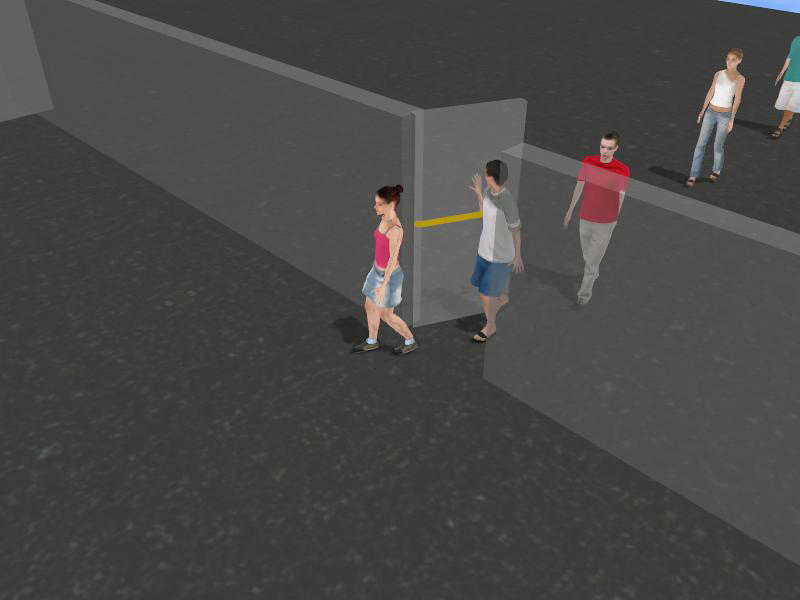
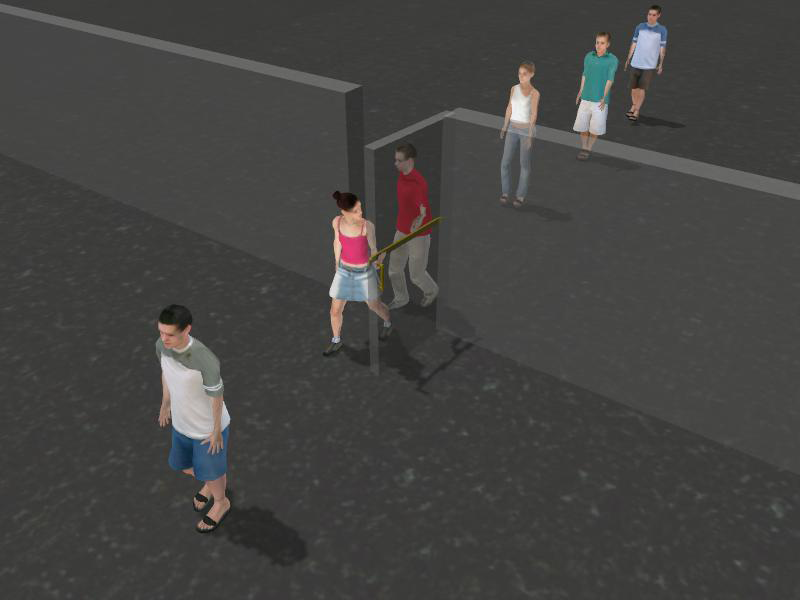
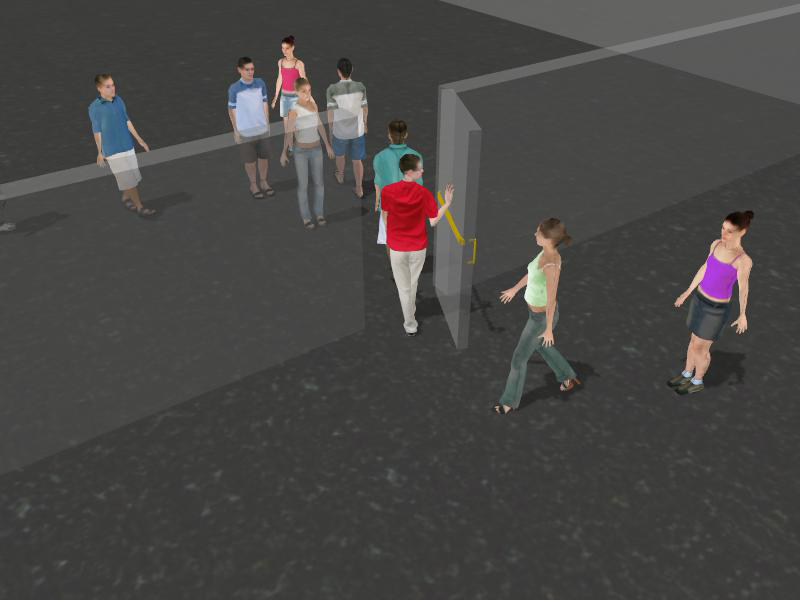
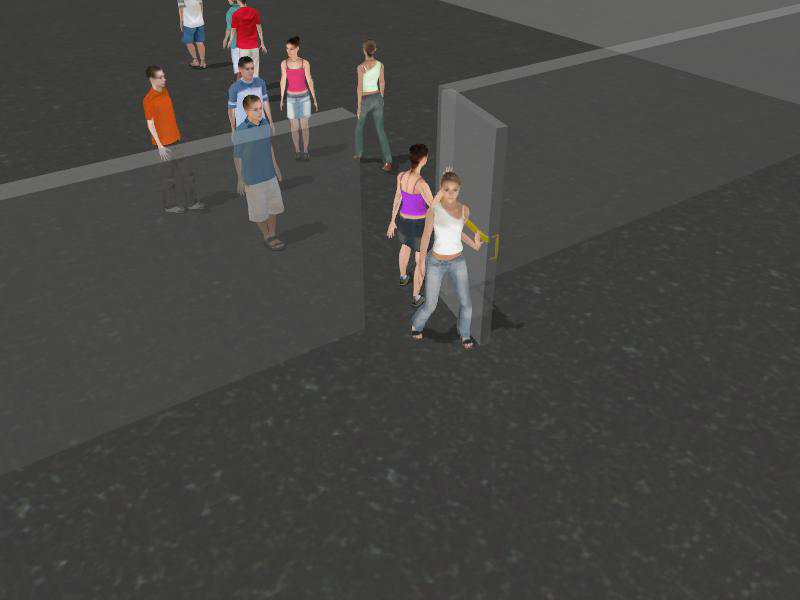
|
| Revolving door (left 2 figures) and double door (right 2 figures) scenario simulations: |
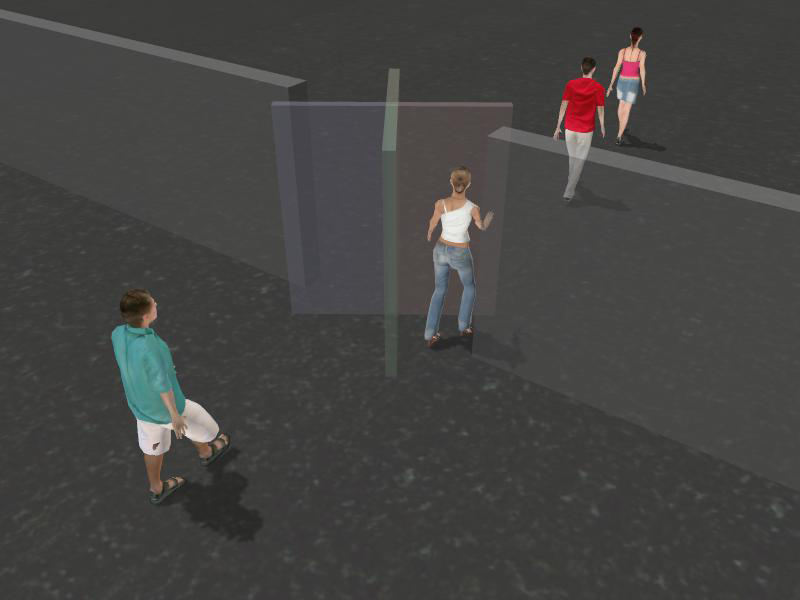
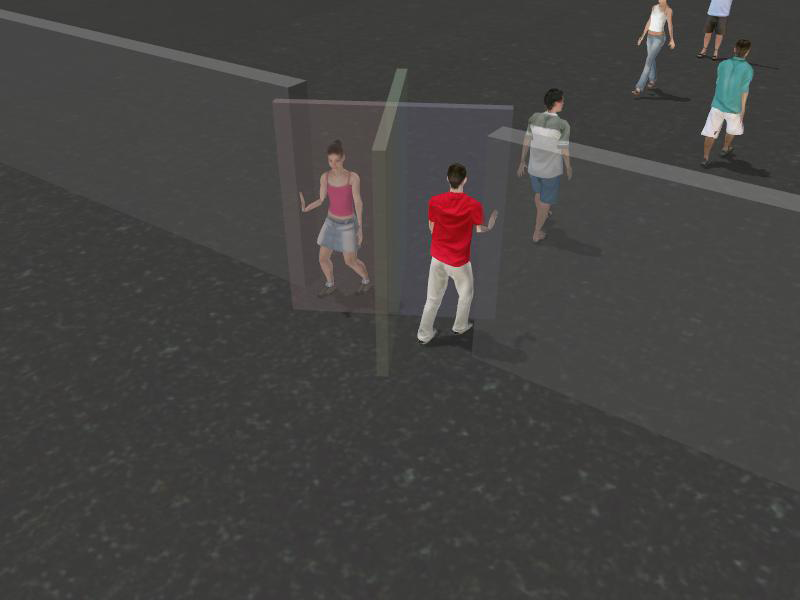
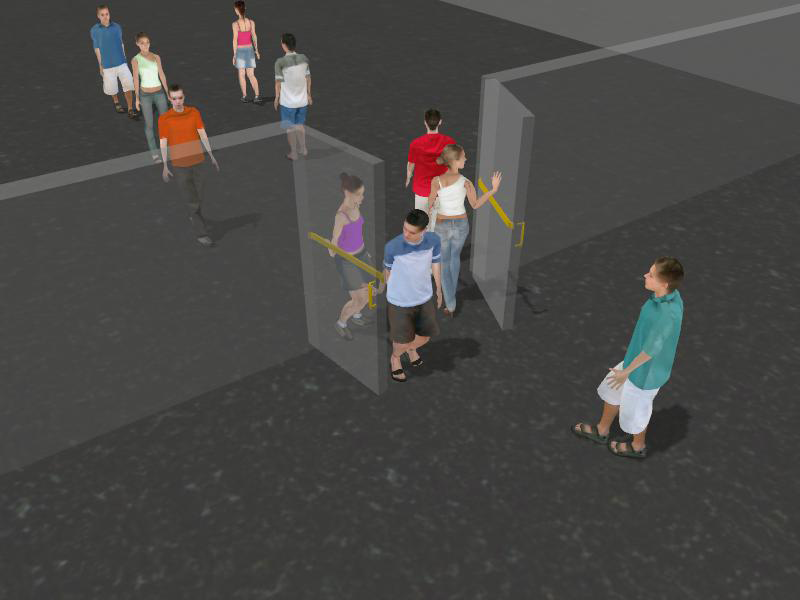
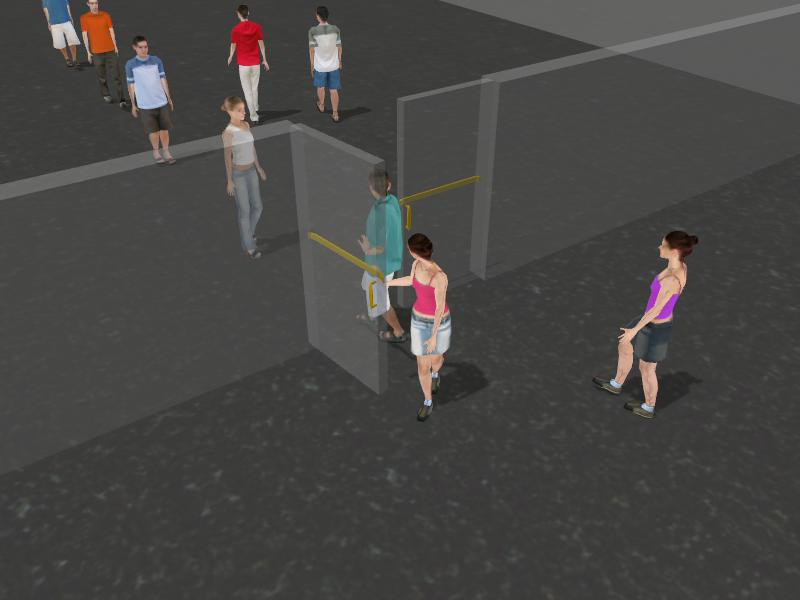
|
| Perambulator scenario simulations: |
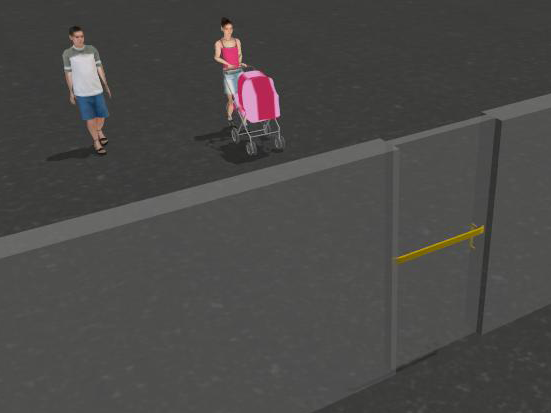
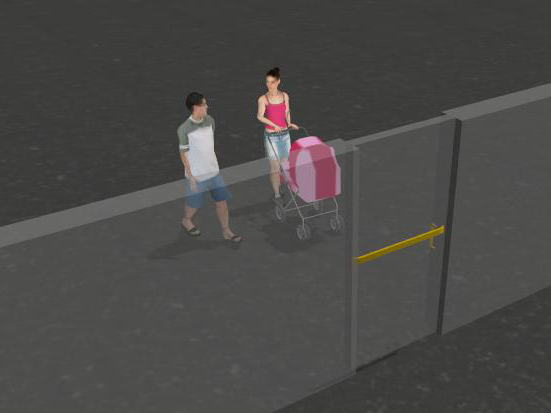
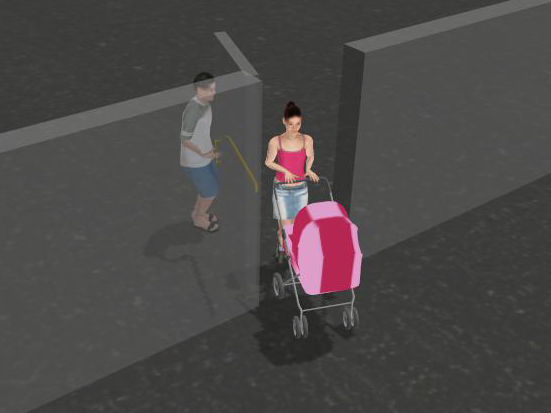
|
| Real-time autonomous simulation of a multiple-door scenario with 4 doors and 16 pedestrians: |

|